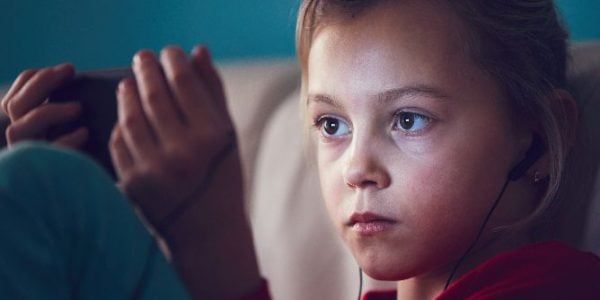Briefing paper
While the UK government has announced some relaxation of statutory regulations for children in care, advice at the time of writing indicates that local authorities in England and Wales remain obligated to allow looked-after children ‘reasonable contact’ with their birth families during the current COVID-19 lockdown.1
In light of this advice, it is crucial to understand how digital technologies can be managed to maintain contact while prioritising children’s best interests.
This briefing paper highlights the key findings of a rapid evidence review that examines what is known about the implications of digital contact for the well-being of children who have been separated from their birth relatives in public law contexts. It also reviews relevant literature on digital contact in private law contexts, such as separation and divorce, and draws out key lessons for managing digital contact between birth relatives and children in public law placements.
What do we mean by ‘well-being’
This review takes a multi-dimensional view of ‘well-being’, using a broad definition of ‘the combination of feeling good and functioning well’ at both individual and interpersonal levels (Huppert and So 2013; Seligman 2011, cited in Huppert and Ruggieri 2018, p. 136). In this context, we take it to include: mental health; emotional well-being; physical health; behaviour; safety; identity; satisfaction with contact arrangements; quality of relationships with birth family/non-resident parents; and quality of relationships with placement family/resident parents.
Key research findings
The rapid evidence review synthesised the findings of 16 publicly available studies from UK and international academic and grey literature, covering both public and private law contexts.
The evidence indicates that it is not possible to simply state that digital contact with birth families is either positive or negative for children and young people’s well-being. While none of the studies established (or attempted to establish) a causal impact of digital contact on children’s well-being, several key themes emerged.
Digital contact is more immediate, less formal, and can help facilitate relationships
The more immediate and less formal nature of digital contact with birth families has key benefits for children and young people’s well-being. It can allow them to feel more connected to their birth families, develop their sense of identity, and have more freedom and control over contact arrangements.
It can be difficult for carers and professionals to set boundaries and supervise digital contact
Key challenges in digital contact include negotiating the amount of responsibility placed on children and young people in care to manage digital contact. There is also the potential for unwanted digital contact from birth family members and associated risks to their safety and emotional well-being.
Digital contact can help to overcome physical distance between children and their birth families
Digital contact provides a means for contact to continue in the context of social distancing requirements. It can also provide a means of contact when the costs of face- to-face contact, for example related to travel, are prohibitive for birth or placement families.
Digital contact should be used to enhance rather than replace face-to-face contact
Private law studies highlight that children, parents and professionals alike feel that there are benefits of face-to-face contact that are lost through digital contact alone.
Appropriate forms of digital contact depend on the child’s age and experience
Findings from private law studies indicate that appropriate forms of digital contact depend on a child’s age and existing digital practices— and that it needs to be supported and appropriately supervised at all ages, given the associated potential risks and challenges:
- conversations via video calls may not be appropriate for very young children—the artificial nature of such interactions may make it difficult for younger children to bond or interact with adults virtually
- video calls may allow birth family members to participate in older children’s everyday activities such as homework, story-telling, games, and in key events such as birthdays
- older children and young people may prefer, and have access to, other forms of digital contact—for example, mobile phones and social media may provide a greater degree of control over contact.
Study strengths and limitations
This review follows an adapted rapid evidence assessment (REA) methodology— the findings reported above are based on a proportion of studies that met the inclusion criteria and does not claim to comprehensively summarise all relevant evidence. As such, evidence gaps identified through the review should be treated with caution.
Of the 16 key studies included in the review, two were quantitative studies, six were qualitative studies, four were mixed- methods studies and four were evidence reviews.
While a similar number of public law studies (19) and private law studies (15) were identified through the search process, the relationship between digital contact and well-being was better evidenced in public law contexts than in private law contexts. Consequently, 11 of the included studies focused on public law contexts and 5 on private law contexts. This may reflect the pattern of available evidence, as it seems in the private law context there is greater focus on how digital contact is applied in child custody cases rather than its effects on children’s well-being.
Evidence gaps
Understanding children’s perspectives and needs
Studies are required to understand children’s perspectives and needs, and how digital contact corresponds to children’s everyday digital practices. Our review indicates that children and young people may view and experience digital contact very differently from their carers and social work professionals. They are also best placed to provide insights into how digital contact can be situated within their everyday digital practices. Rapid qualitative research to understand how children, young people, birth and placement families are maintaining contact during the COVID-19 crisis would also provide important real- world perspectives on managing digital contact.
Understanding age-appropriate forms of digital contact
Further work should be done to understand which forms of digital contact are appropriate based on children’s age. Evidence from North American private law contexts indicates that a range of digital contact arrangements can be used depending on children’s age and developmental stage. However, there is limited evidence on how age-specific arrangements could be supported and implemented in the UK.
Understanding how to manage digital contact in the context of socio-economic inequalities
There is little evidence on how to manage digital contact in the context of socio- economic inequalities. Access to digital technology and skills varies significantly in the UK (Office of National Statistics 2019). If digital contact is to be used as a temporary replacement or future enhancement for face-to-face contact, more work is required to understand how this can be facilitated for those who do not have access to or experience of digital technology.
Recommendations
Available evidence on digital contact indicates that the key question is not whether digital contact has a positive impact on children’s well-being, but how best to facilitate digital contact that is positive for children’s well-being. Key questions for professionals to consider include:
- how digital contact arrangements can be organised and meaningfully managed
- how children and young people can be supported and equipped to manage digital contact themselves.
Take a child-centred approach
It is crucial to consider the needs, rights and perspectives of children and young people when arranging digital contact. This includes establishing age-appropriate forms of digital contact that complements children’s everyday lives. The majority of the reviewed studies do not include children and young people’s own perspectives on digital contact and well-being.
Manage expectations and transitions
Professional support is important in the context of the COVID-19 pandemic since, in many cases, professionals will be managing transitions from face-to-face contact to digital contact. They will be doing so at a time of considerable stress and anxiety for many people. The reviewed evidence indicates that digital contact may be a useful contingency measure when face-to-face contact is not possible, but it should not be seen as a long-term replacement for direct contact.
Support all parties
All parties, including children and young people, birth families, carers and placement families, require support for agreeing contact arrangements and setting appropriate boundaries. Children and young people need to be supported so that they feel in control of digital contact, but that they are not solely responsible for managing boundaries or staying safe. This will increase the likelihood they can enjoy the benefits of digital contact. It will also ensure that they are supported to manage any challenges, and report any safeguarding concerns. Birth families may also require tailored support to make sure they have positive experiences of contact for their own and their children’s well-being.
Acknowledge digital inequalities
Unequal access to technology, good quality internet connections and digital skills mean that digital contact is not possible for all looked-after children and young people and their birth families. While not discussed in reviewed studies, it is an important consideration when deciding how best to balance appropriate contact arrangements with social distancing requirements.
1 See, for example: The Adoption and Children (Coronavirus) (Amendment) Regulations 2020. UK Statutory Instrument No. 445. Available from: www.legislation.gov.uk/uksi/2020/445/contents/made [Accessed 18 May 2020]; and Children’s social services during the COVID-19 pandemic: guidance (Welsh Government 2020). Available from: https://gov.wales/childrens-social-services- during-covid-19-pandemic-guidance-html [Accessed 20 May 2020].
References
Huppert, F. A. and Ruggieri, K. (2018). Policy challenges: well-being as a priority in public mental health. In D. Bhugra, K. Bhui, S. Wong, and S. Gillman, ed., Oxford Textbook of Public Mental Health. Oxford: Oxford University Press, 131-140.
Huppert, F. A. and So, T. T. (2013). ‘Flourishing across Europe: application of a new conceptual framework for defining wellbeing’. Social Indicators Research 110 (3), 837-861.
See the main report for a list of studies synthesised in the review, screened at full- text level and not included in the review, and studies that informed the review.
Organisations
-
 National Centre for Social Research (NatCen)
National Centre for Social Research (NatCen)











